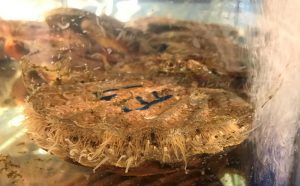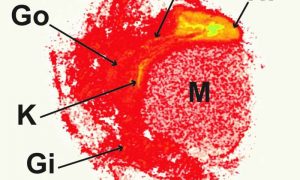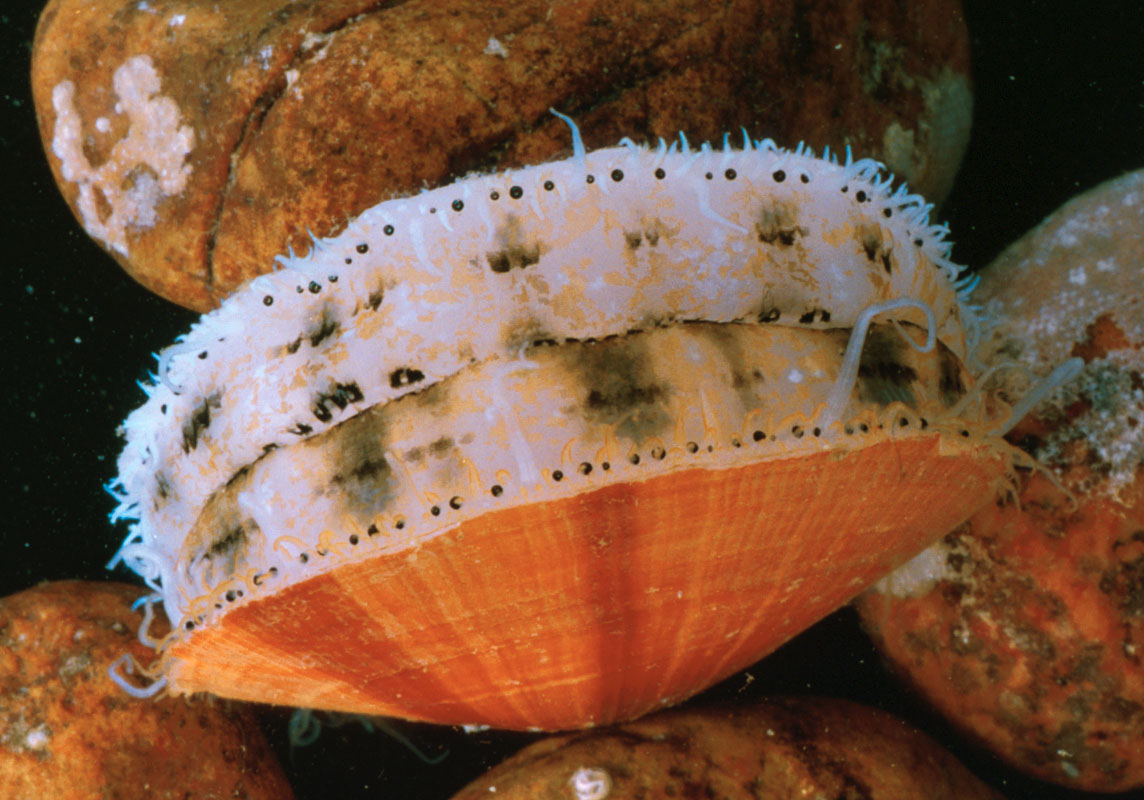A July 27, 2020 news item on Nanowerk announces research into gut health described as seminal (Note: A link has been removed),
An international team of scientists has completed the first ever study into the potential impact of naturally occurring and man-made nanoparticles on the health of all types of the major living species of animals.
Conceived by researchers at the University of Plymouth, as part of the EU [European Union] Nanofase project, the study assessed how the guts of species from honey bees to humans could protect against the bioaccumulation and toxicological effects of engineered nanomaterials (ENMs) found within the environment.
A July 27, 2020 University of Plymouth press release, which originated the news item, provides more detail,
It showed that the digestive systems of many species have evolved to act as a barrier guarding against the absorption of potentially damaging particles.
However, invertebrates such as earthworms also have roving cells within their guts, which can take up ENMs and transfer them to the gut wall.
This represents an additional risk for many invertebrate species where the particles can be absorbed via these roving cells, with consequent effects on internal organs having the potential to cause lasting damage.
Fortunately, this process is not replicated in humans and other vertebrate animals, however there is still the potential for nanomaterials to have a negative impact through the food chain.
The study, published in the July [2020] edition of Environmental Science: Nano, involved scientists from the UK, the Netherlands, Slovenia and Portugal and focused on particles measuring up to 100 nanometres (around 1/10 millionth of a metre).
It combined existing and new research into species including insects and other invertebrates, fish, birds, and mammals, as well as identifying knowledge gaps on reptiles and amphibians. The study provides the first comprehensive overview of how differences in gut structure can affect the impact of ENMs across the animal kingdom.
Richard Handy, Professor of Environmental Toxicology at the University of Plymouth and the study’s senior author, said:
“This is a seminal piece work that combines nearly 100 years of zoology research with our current understanding of nanotechnology.
“The threats posed by engineered nanomaterials are becoming better known, but this study provides the first comprehensive and species-level assessment of how they might pose current and future threats. It should set the foundations for understanding the dietary hazard in the animal kingdom.”
Nanomaterials come in three forms – naturally occurring, incidentally occurring from human activities, and deliberately manufactured – and their use has increased exponentially in the last decade.
They have consistently found new applications in a wide variety of industrial sectors, including electrical appliances, medicines, cleaning products and textiles.
Professor Handy, who has advised organisations including the Organisation for Economic Co-operation and Development and the United States National Nanotechnology Initiative, added:
“Nanoparticles are far too small for the human eye to see but that doesn’t mean they cannot cause harm to living species. The review element of this study has shown they have actually been written about for many decades, but it is only recently that we have begun to understand the various ways they occur and now the extent to which they can be taken up. Our new EU project, NanoHarmony, looks to build on that knowledge and we are currently working with Public Health England and others to expand our method for detecting nanomaterials in tissues for food safety and other public health matters.”
Here’s a link to and a citation for the paper,
The gut barrier and the fate of engineered nanomaterials: a view from comparative physiology by Meike van der Zande, Anita Jemec Kokalj, David J. Spurgeon, Susana Loureiro, Patrícia V. Silva, Zahra Khodaparast, Damjana Drobne, Nathaniel J. Clark, Nico W. van den Brink, Marta Baccaro, Cornelis A. M. van Gestel, Hans Bouwmeester and Richard D. Handy. Environmental Science: Nano, Issue 7 (July 2020) DOI: 10.1039/D0EN00174K First published 27 Apr 2020
This article is open access.
If you’re curious about Nanofase (Nanomaterial FAte and Speciation in the Environment), there’s more here and there’s more about NanoHarmony here.


